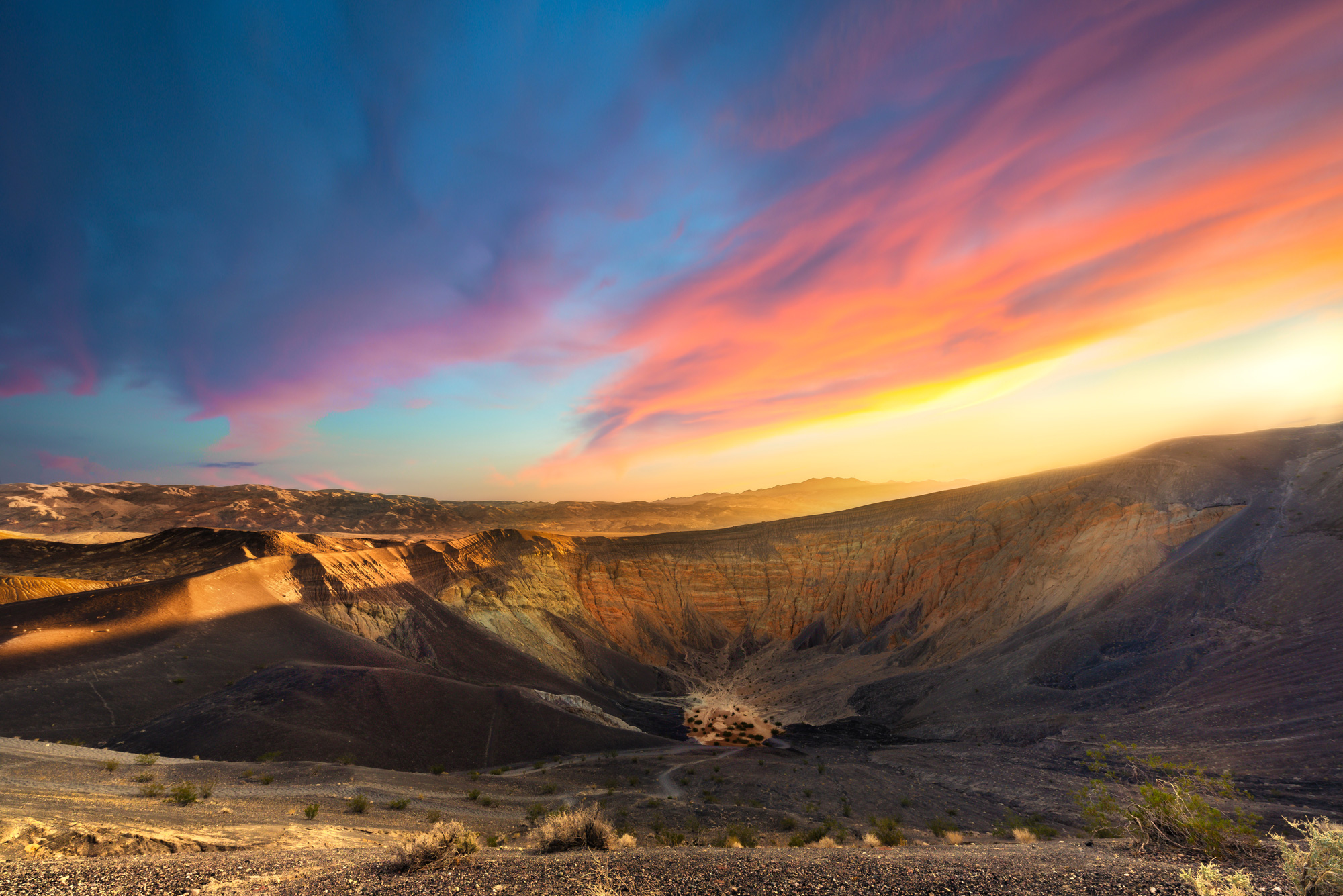The desert resort is his happy place
Death Valley is fantastic; this is like a dream come true for me. It’s everything I love. I love nature, I love the changing light, I love the desert air here. The rocks, and the water. The spring that feeds this resort is just phenomenal.
Even on a chilly November morning, as an early winter storm moves across Death Valley National Park, a mix of serious photographers and selfie-seeking tourists gather before dawn for sunrise at Zabriskie Point. Drizzle drifts through the air as the rising sun fights through the overcast and begins to light up the valley and the snow-dusted summit of 11,043-foot Telescope Peak in the Panamint Mountains. A rainbow forms over the mountains and the cameras click away.
There’s a familiar face in the crowd at the overlook: 6-foot-11-inch-tall basketball Hall of Famer and broadcaster Bill Walton. After discovering the area 17 years ago, the two-time NBA world champion and twice a national champion at UCLA, has become an acolyte of all things Death Valley, as well a regular at The Inn at Death Valley. No way would he miss sunrise at Zabriskie Point. And, despite the blustery conditions, later in the morning, he would go on a long bike ride along Highway 190 toward Dante’s View.“This is the life that I love,” says Walton. “I do not spend my days sitting on the couch and watching television and waiting for the telephone to ring. I’m out there. It’s all about the possibilities. Death Valley epitomizes my biggest dream in life, which is all I want is more. Here I am — 66 years old, healthy, madly in love, and in Death Valley. What more could you ask for? I’m the luckiest guy in the world.”
Now a college basketball analyst with ESPN and the Pac-12 Network, the garrulous Walton is renowned both for the depth of his hoops knowledge, as well as an infectious, unorthodox approach to broadcasting. Not only is Walton one of basketball’s all-time greats, he’s also a Hall of Fame talker, who never met a superlative that he didn’t like. Or love.
So we sat down with Walton over date shakes at the 224-room Ranch at Death Valley to better understand his deep connection with Death Valley. “This is just heaven on Earth,” he says. “We try and come out here as often as we can.”
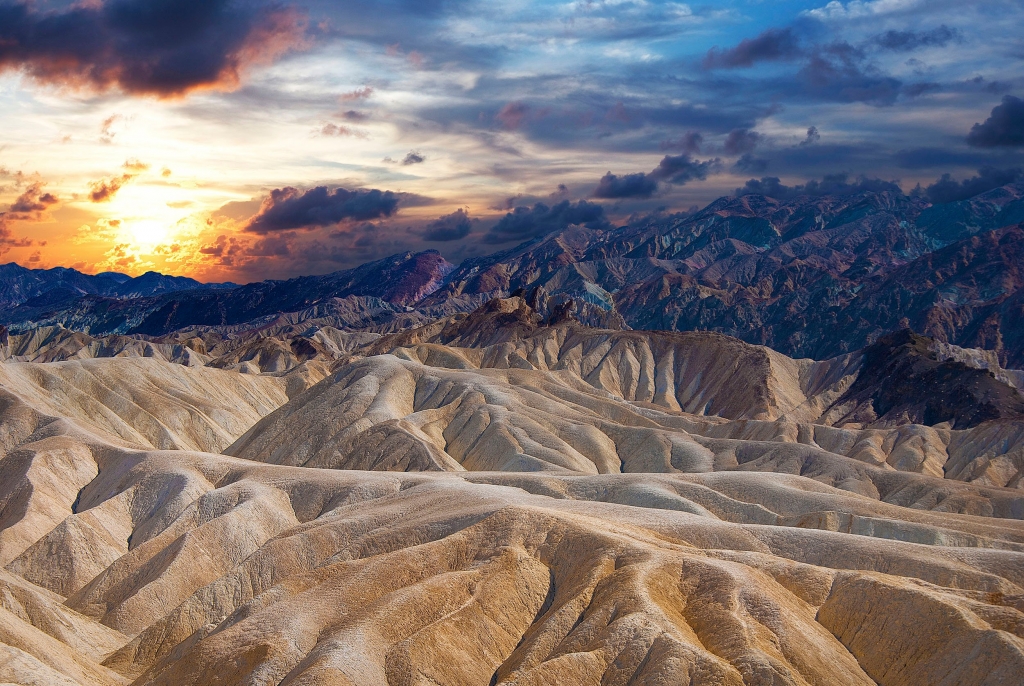
Discovering the Desert
Our family culture was one of curiosity, exploration, and experimentation. My dad loved the outdoors and loved California — my dad is a California native — but he did not like the desert. He grew up in the Central Valley and liked the running water. He liked the ocean.
We did not have enough money to stay in a hotel, so we were campers. And I love camping. We spent our youth and childhood, every summer on both sides of the Sierra Nevada and on the coast. Northern California and the rivers. Lake Tahoe. And the mountains with the big rivers — Lassen and Shasta.
But then I went out on my own, when I was 16 or 17, and I just fell in love with the desert. In the early days, Palm Springs and the mountains there. Mount San Jacinto and the Santa Rosa Mountains, and then Joshua Tree.
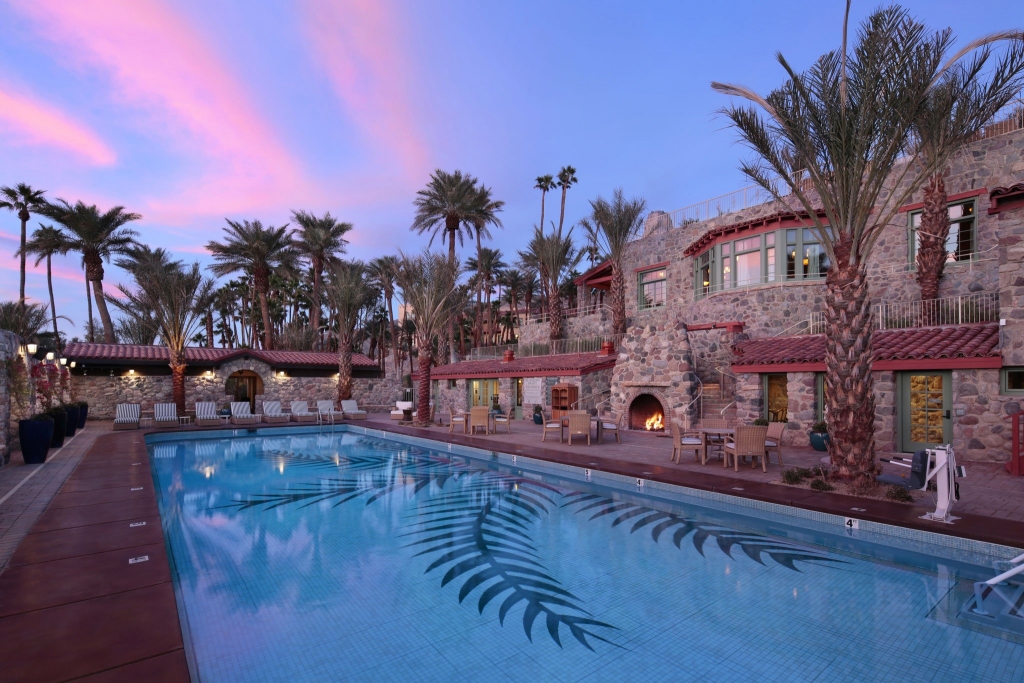
His First Visit to Death Valley
It was 17 years ago after I had my second ankle fusion. I was riding my bike and someone just came up to me and said, “Hey man, there’s going to be a big group ride in Death Valley. You should go, it’s going to be really cool.
”So I came up here and we stayed for four days that first time. Before we left, we made a reservation at the hotel for the next year. For two weeks. Then we came back the next year for two weeks. And before we left that year, we made a reservation for a month. Then we came every year for a month.It’s fantastic, this is like a dream come true for me. It’s everything I love. I love nature, I love the changing light, I love the desert air here. The rocks, and the water. The spring that feeds this resort is just phenomenal. The quality of the water. You been in the pool yet? The water’s 85 degrees every day. And they’ve got those fireplaces going right next to the pool.
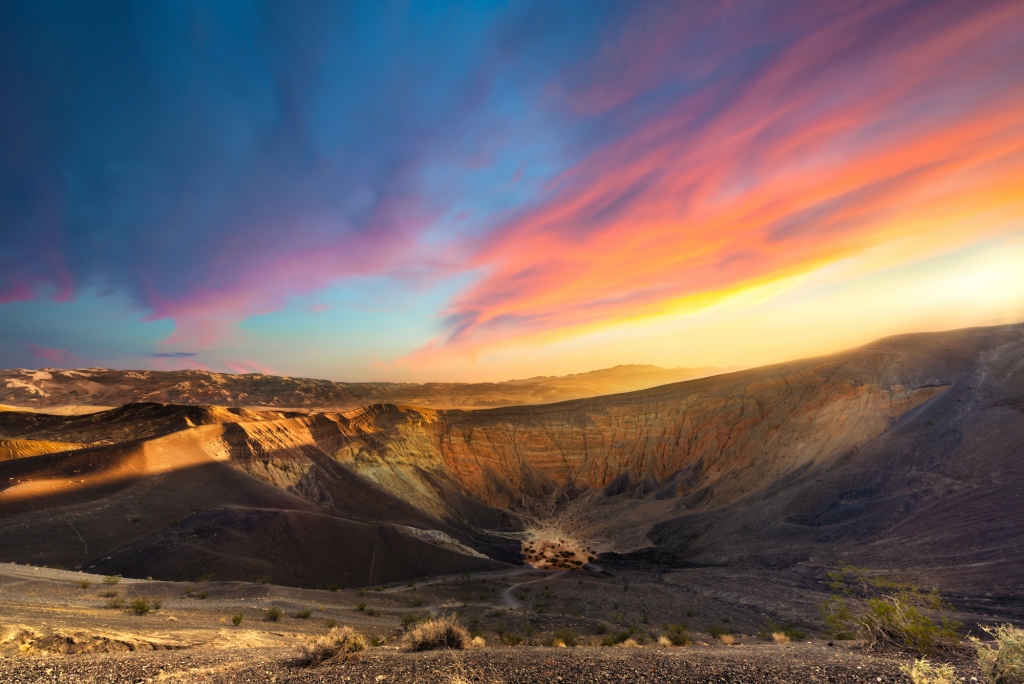
Why He Loves The Inn at Death Valley
They took paradise and they made it better. It’s better than perfect. Every time I come here, it’s such a healing place, it’s such an inspiring place. An empowering place, an enabling place. And the people who come here, people who are here for the first time, their eyes light up and they say, ‘Oh my gosh, I just had no idea.”
The quality — you look at all of the things that Philip Anschutz (owner of The Oasis at Death Valley) does. And you look at all of the things that his company AEG does. And what (his travel company) Xanterra does. You look at all of the projects that they have going on. All of them epitomize quality.
Now they’ve made the hotel even nicer while maintaining the culture and the tradition and the history. The architecture and the stonework. And then what tops it off are the people who work here.
This hotel has everything: the pool, the restaurant, and we stay in the same room every year, 227. Perfect access for the bike rider. You’re on the ground level, so you can go straight out.
This is a land of extremes and you’re out there on your bike all day. But you’re also in the pool, early morning or evening. You just get healthy and feel so good that you say, “I can do anything.”
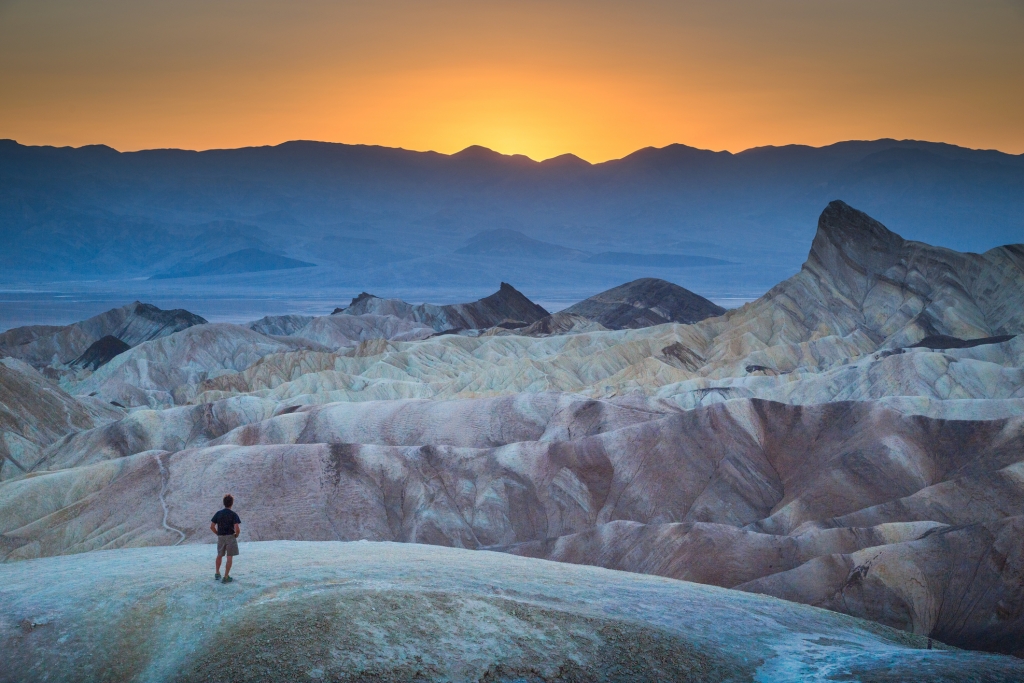
The Meaning of Death Valley
It’s a very spiritual place, a place of enlightenment. A place of passion. A place of imagination and creativity. Death Valley heals every part of my being. Physically, mentally, spiritually, emotionally, psychologically.
It’s also a place of empathy. Because when you’re here, you get an incredible grasp of how fragile everything is and how tenuous everything is. The need — while we enjoy the risks of living on the edge — the need to be cautious and not to get too close to that edge. Because this is a place that anything can, does, and will happen. Death Valley teaches you a lot of lessons. And one of those lessons is the power of nature.
You’re just awestruck by the magnificence and the grandeur of nature in Death Valley. Every aspect of it is here. I’m so glad that the people who are visiting for the first time got to see the rain this morning. That they got to see the rainbows. Because for so much of the time, it’s pure sun.
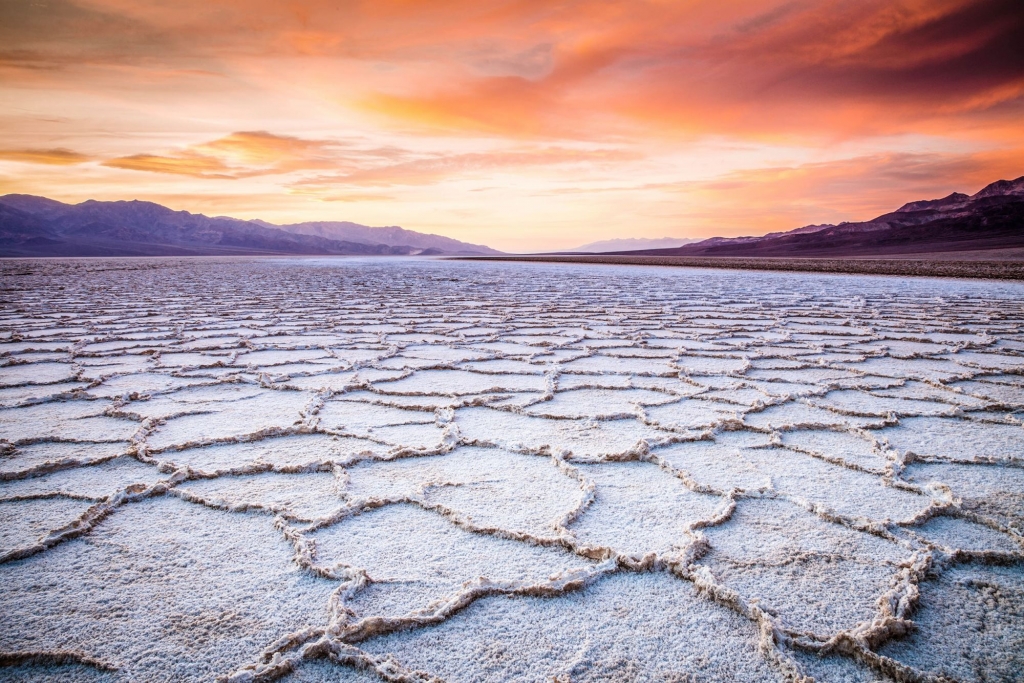
Favorite Death Valley Places
We have four children, so I try not to get into ranking and rating favorites. There are so many different places to see in Death Valley. Whether it’s Titus Canyon or Ubehebe Crater. Whether it’s Marble Canyon, whether it’s Golden Canyon, Scotty’s Castle when it’s open.
And then the bike riding. The bike riding is superb. There are endless and dizzying possibilities for what to do here, whether it’s the bike ride you took to Badwater or Mormon Point. Jubilee Pass, Salisbury Pass. Towne’s Pass. Death Valley is Mother Nature’s greatest sports arena. And how appropriate that this whole resort is from Phil Anschutz — Mr. Sports Arena.
There are countless, fantastic adventures and experiences. And you just keep going. The days — there’s sadly never enough time. You want to be back by dark so you can get in that swimming pool. Work it all out, scrape the day off, get a hot shower and then go into the dining room. Because the food is spectacular!
How to Explore
The Oasis at Death Valley in Furnace Creek is situated in a lush oasis surrounded by the vast and arid desert of Death Valley National Park — just 120 miles northwest of Las Vegas and 275 miles northeast of Los Angeles. The resort encompasses two hotels — the historic AAA Four Diamond, 66-room Inn at Death Valley and the family-oriented, 224-room Ranch at Death Valley. The entire resort went through a complete renaissance with an extensive renovation in 2018. It includes natural spring-fed pools, an 18-hole golf course, horse and carriage rides, world-renowned stargazing, and is surrounded by Death Valley National Park’s main attractions. For information and reservations, visit The Oasis at Death Valley or call 800-236-7916.
For more travel experiences to Beautiful Places on Earth™ available from Xanterra Travel Collection® and its affiliated properties, visit xanterra.com/stories.


